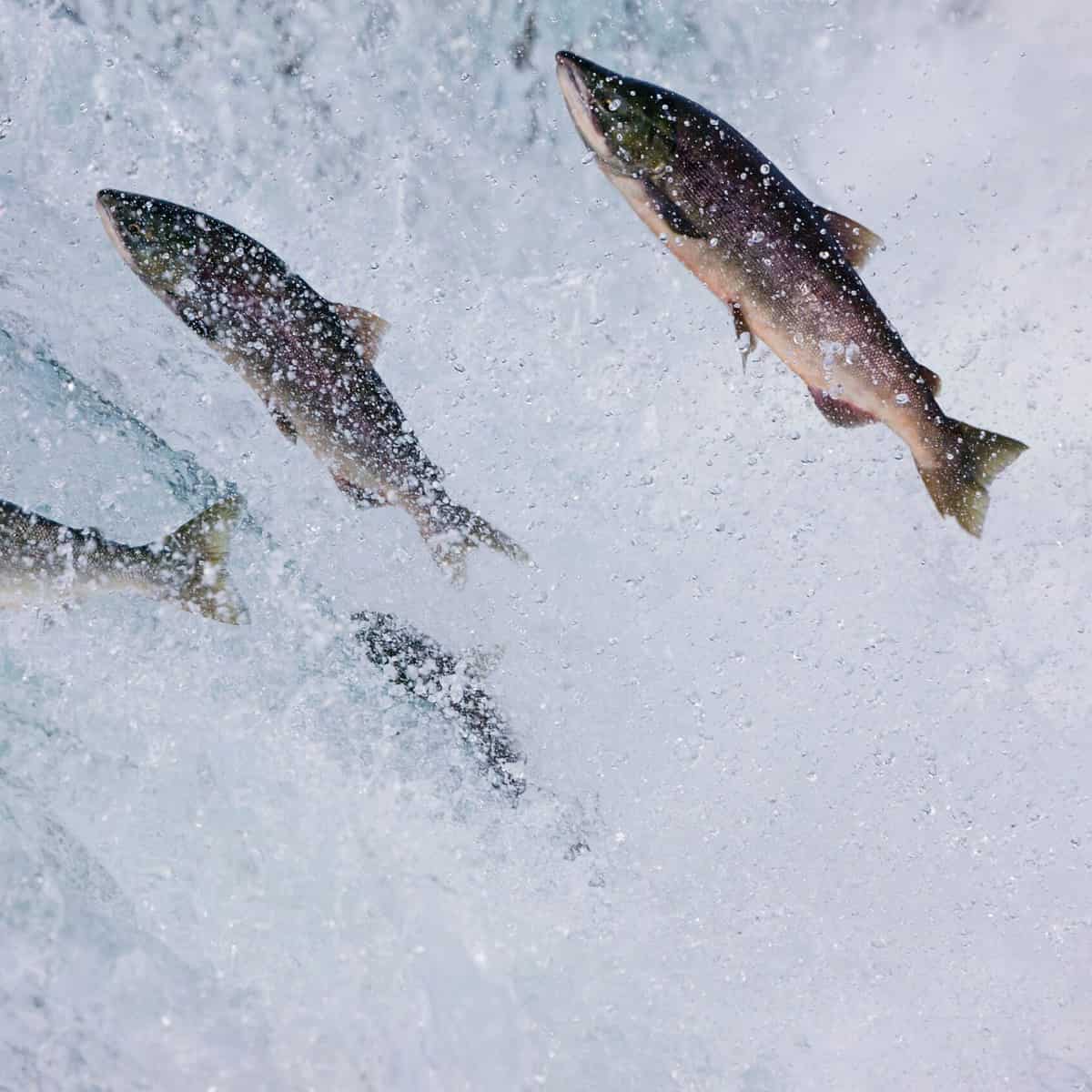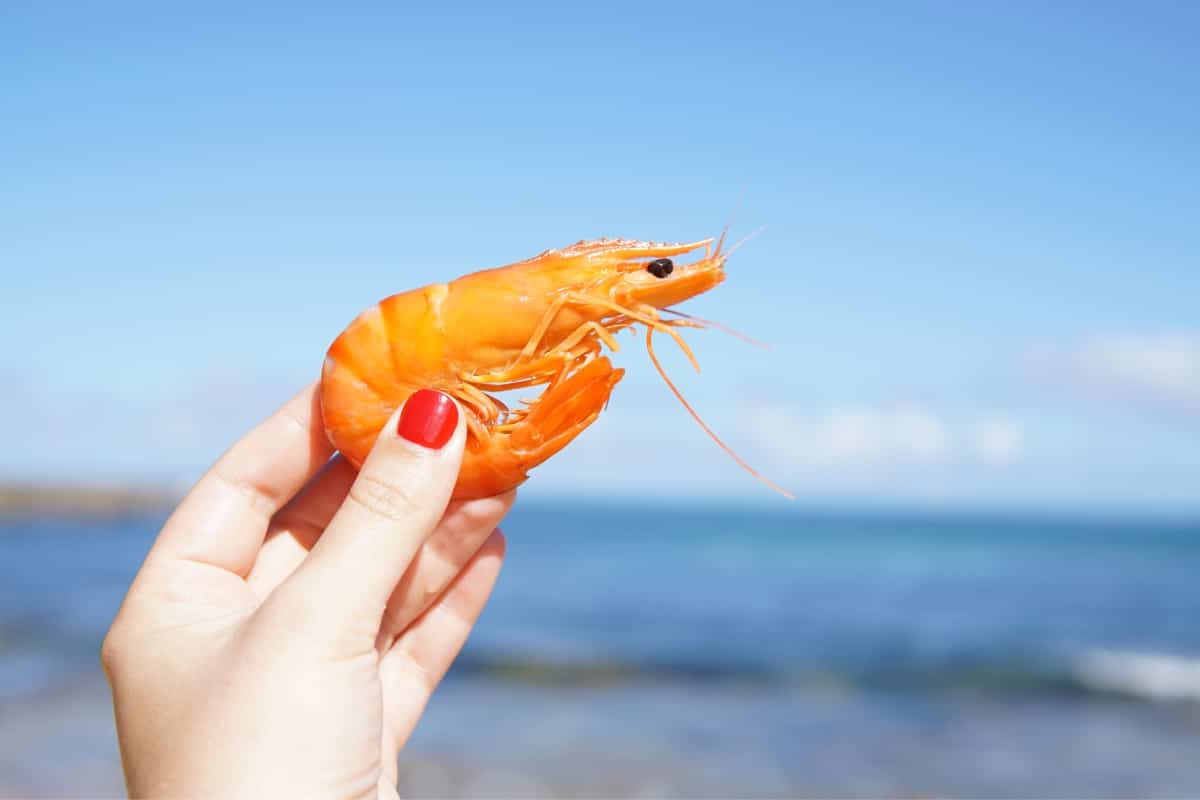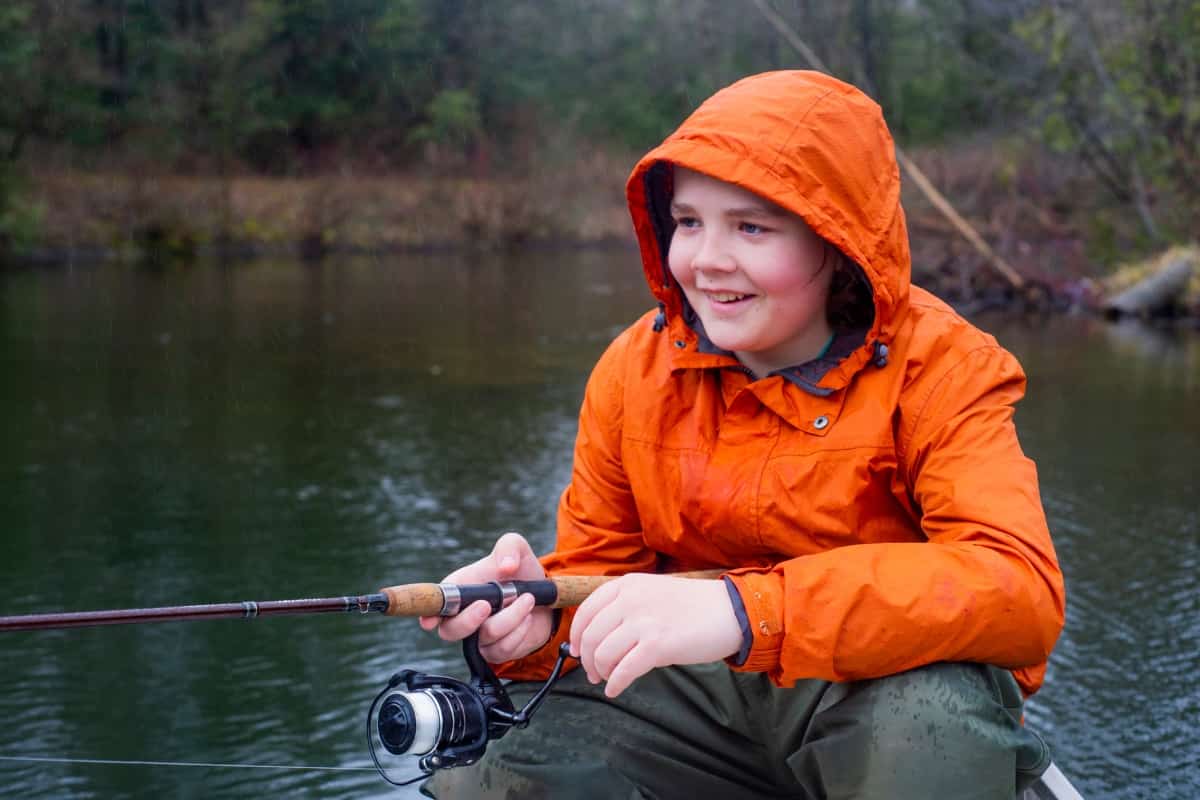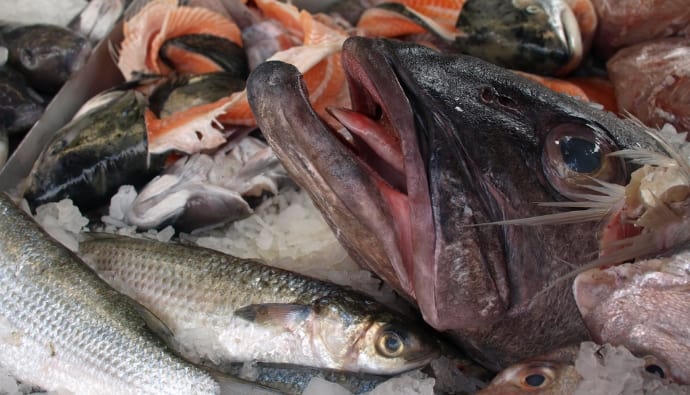
Trout are an exciting species of fish to catch. You can traverse some of the most breathtaking scenery just by getting to them. Anglers who are serious about catching trout will often travel to far off locations just for the chance of landing one. With the right gear and technique, you can have a great time fishing for trout. And the best part? Trout is an absolutely delicious fish to eat.
In this article, I will cover how to fillet a trout properly. I will also cover one of the best trout recipes that are completely irresistible.
Catching Trout
As with any fish, the sooner you can get the intestines out and the trout on ice, the better. This can mean the difference between a fresh-tasting fish and one that has a strong “fishy” taste.
Fly fishers carry a basket or storage container for caught fish. This works well to hold the trout until you are ready to call it a day.
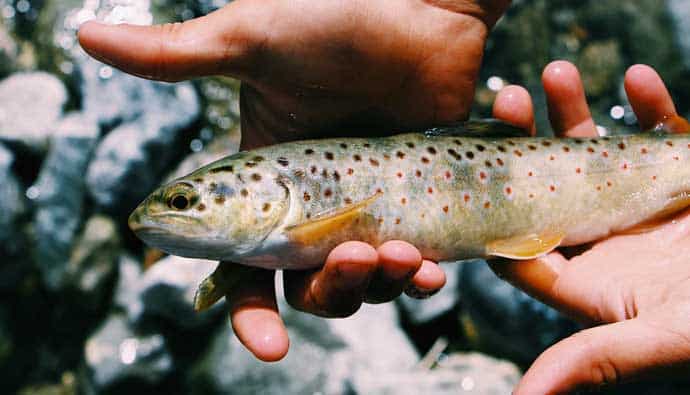
However, it doesn’t do much to keep the trout fresh. Keeping a good cooler full of ice near where you are fishing is a good idea.
If you are in a boat, a cooler full of ice is better than a live well if you plan to take them home. It’s always good to keep the meat cold to prevent spoilage.
Want to catch more trout? Check out our guide for more trout fishing tips.
Tools You Will Need to Cleaning and Filleting Trout
A tool that you should pick up right away is a skinning board. This board with a clip on one end is designed to hold a fish while it is descaled and skinned.

A good, sharp fillet knife is a must. A good fillet knife will be razor sharp and hold its edge very well. More people are injured using a dull knife than a sharp one.
This happens when a large amount of force is applied to the fish using a dull knife.
Accidents happen. Protect yourself with a sharp knife.
A higher-quality fillet knife will fillet trout effortlessly.
A pan of very cold water or ice water for putting your fillets in maintains the freshness of the fish. If fish is allowed to warm, it can change the texture of the meat and seriously affect the taste.
If you are going to store your fillets to prepare later, a freezer bag is a way to go. Put your fillets in the freezer bag and fill it with water.
The water should completely cover the fish. This helps prevent freezer burn and, again, helps keep the fish tasting fresher.
When you are ready to cook trout, put the entire bag into a container of cool water. This will defrost the fillets slower, preserving freshness.
How to Fillet Trout
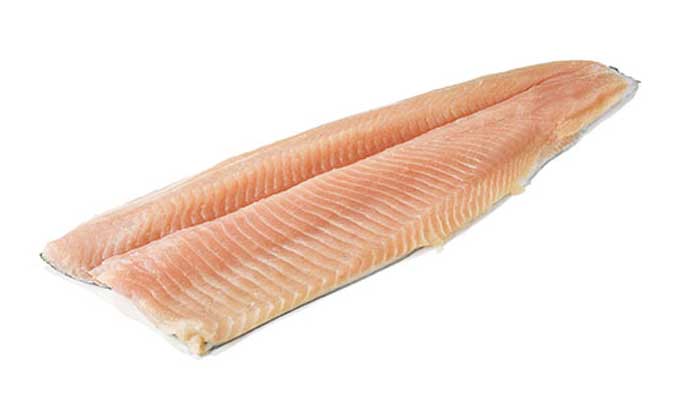
You can use this guide for filleting almost any trout – from rainbow trout to steelhead trout.
- Remove the trout’s head. Filleting should be done when you wish to serve only the best quality fish rather than cooking it whole.
- Start by cutting through the neck of the trout at the groove of the gills. Angle the blade of your sharp knife so that you are cutting toward the head rather than the body to preserve the meat.
- Cut the first fillet along the top of the backbone. Place the trout on its side with the belly facing away from you. Start a small cut on the top side of the backbone at the opening where you removed the head.
- Insert your filleting knife into this groove and run the knife down the length of the fish, staying just above the backbone. Finish by slicing through the section at the base of the tail. You now have a clean, meaty fillet. (If you’re staying close enough to the backbone, you should be able to hear an audible clicking as you slice through the rib bones.)
- Flip the trout over and cut the second fillet. Turn the trout over on its opposite side and repeat the filleting process. Start the cut at the head and slice smoothly along the upper edge of the backbone until the entire fillet has been cut away.
- Remove the pin bones. Place each fillet skin side down and pick out all the pin bones you find. Scrape along the flesh with your knife or pick up each fillet and flex it to expose lodged deep bones.
- Get rid of the skin. Now that the trout have been filleted and deboned, you only need to make one more cut to remove the skin. Take hold of the fillet on the tail end and use your filleting knife to cut into the flesh at an angle until you reach the outer layer of the skin. Run the knife edge along the bottom of the fillet while tugging the skin lightly in the opposite direction. The skin should come away clean.
Again, while removing the skin before cooking is unnecessary, it is commonly done when filleting fish. This makes it easier to eat.
Grilling Trout
If you find yourself with a trout too small to fillet, throw it on an open fire with some oil on the outside. You can also throw some seasonings on the inside and outside for taste. I like to use a little garlic, salt, and pepper, and once cooked, spritz some lemon slices over the top.
The trout meat should fall right off the skin. It pairs well with rice or noodles.
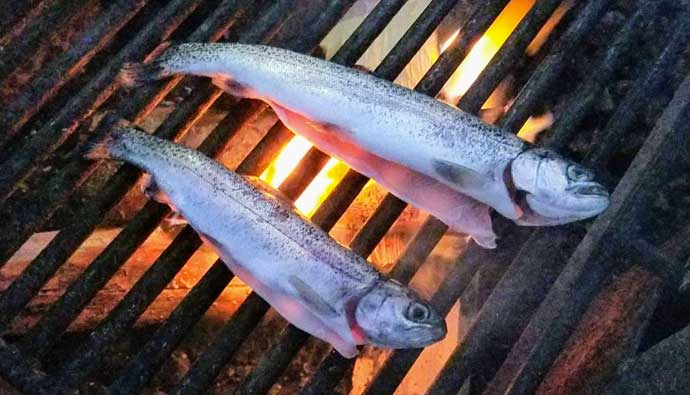
A Must-Try Trout Fillet Recipe
Here’s our spin on a great trout recipe that will make your mouth water.
Total Time
Prep/Total Time: 30 min. Makes four servings.
Ingredients
- 1-pound trout fillets
- 1 cup sour cream
- 1/4 cup grated Parmesan cheese
- 1 tablespoon lemon juice (lemon slices)
- 1 tablespoon finely chopped onion
- 1/2 teaspoon salt
- Paprika
Directions
- Place fish in a greased shallow 3-qt. baking dish. In a small bowl, combine the sour cream, cheese, lemon juice, onion, and salt.
- Spread over fish. Sprinkle with paprika. Bake, uncovered, at 350° for 20-25 minutes or until fish flakes easily with a fork.
Frequently Asked Questions
Step 1. Hold the fish firmly in your non-dominant hand, belly up. With the knife’s blade facing away from you, insert the tip into the vent and run the knife up the abdomen until it reaches a point between the pectoral fins.
Step 2. Make two incisions behind and underneath the gill plates.
Step 3. Push your index finger and thumb deep into the incisions, firmly pinch them together, and snap the flesh connecting to the jaw.
Step 4. Hold the gills tightly and pull hard to remove the gills, pectoral fins, and entrails.
Step 5. Slice along the membrane covering the kidneys, and scoop out the kidneys using your thumb or blade of the fillet knife.
Step 6. Rinse with fresh cold water.
All types of trout (from rainbow trout to golden trout) have scales that are micro-sized. Most anglers scale the fish when preparing. This is not necessary, but it helps improve the meat’s texture.
Yes. Some bones are so small they are hard to see and can be eaten.
Insider Advice
Trout is one of the most flavorful fish you can put on your dinner table. They are easy to clean and offer many delicious ways of preparation.
Being one of the more healthy types of meat, many people try to consume fish at least 1-2 times per week.
Last but certainly not least, trout are fun to fish for. Suppose you will have the most delicious meal of trout fillets. You either have to buy them or fish for them. We at Cast and Spear recommend fishing for them!




 Facebook
Facebook YouTube
YouTube
